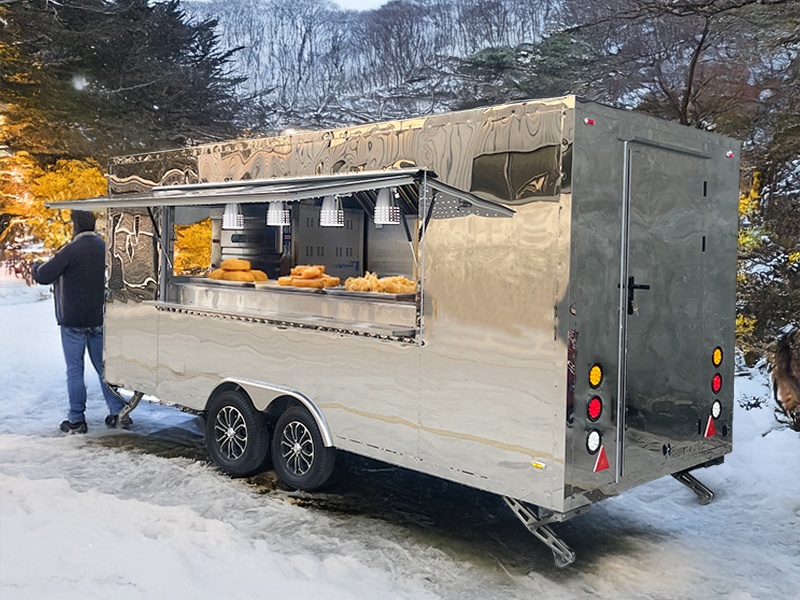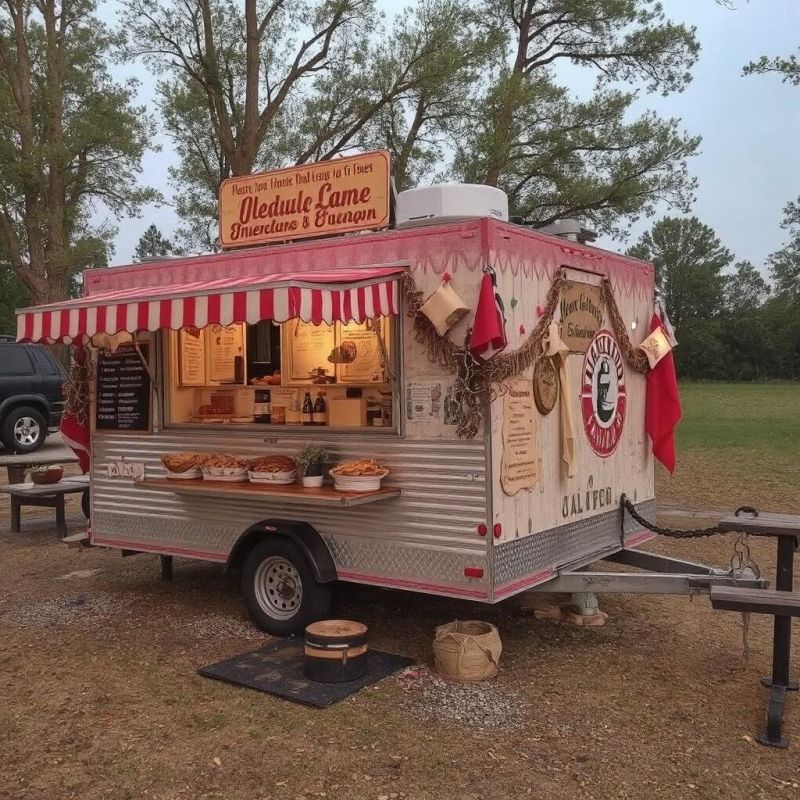Starting a taco trailer business is an exciting entrepreneurial opportunity, and with proper planning, an innovative menu, and excellent customer service, you can stand out in this competitive market. By continually optimizing your taco trailer operations and marketing, you will be able to build a successful mobile food brand.
Conduct Market Research
Before launching your taco trailer business, it’s essential to understand the market:
- Target Audience: Who are your customers? Are they students, office workers, foodies, or families? Understanding your target audience will help you craft your menu and marketing strategies.
- Competition: Research other taco trailers, food trucks, and taco restaurants in your area. What are their menu offerings and prices? What makes your taco trailer unique? Are there any gaps you can fill in the market?
- Location: Identify high-traffic areas where your taco trailer can thrive. Great locations include busy downtown streets, near office buildings, at local events, or close to universities. Be aware of local zoning laws for food trucks and trailers.
Write a Business Plan
A well-structured business plan is crucial for guiding your taco trailer business. Here’s what to include:
- Business Description: Define your taco trailer’s mission and vision. Are you offering traditional tacos, gourmet variations, or fusion-style tacos? This will help attract customers who appreciate your unique concept.
- Menu: Plan your taco offerings. Think about the proteins (beef, chicken, pork, tofu, etc.), toppings (guacamole, salsa, cheese), and sides (rice, beans). Make sure to offer options for different dietary preferences, such as vegetarian or gluten-free.
- Budgeting and Financial Projections: Include startup costs like the taco trailer, kitchen equipment, permits, ingredients, and initial marketing. Outline your expected revenue, expenses, and profitability.
- Marketing Strategy: Detail how you plan to attract customers, whether it’s through social media, flyers, or local event promotions.
- Revenue Model: Consider pricing, portion sizes, and upselling strategies (e.g., adding chips, drinks, or desserts).
Secure Funding
Starting a taco trailer can be costly, but there are several ways to fund your business:
- Personal Savings: Use your own savings if possible.
- Loans: Explore options for small business loans through banks or online lenders.
- Investors: Attract investors or partners to fund your venture.
- Crowdfunding: Platforms like Kickstarter or GoFundMe can help raise funds if you have a compelling story or business model.
Obtain Permits and Licenses
Every food trailer needs the proper licenses to operate legally. Here’s a list of common permits you’ll need for a taco trailer business:
- Business License: Register your business with the local or state government.
- Mobile Food Vendor Permit: This is required for operating a mobile food business in many areas.
- Health Department Permit: A health inspection is required to ensure your taco trailer meets food safety standards.
- Food Handler’s Permit: Depending on your location, you and your employees may need a food handler’s permit to ensure safe food preparation.
- Food Truck/Trailer Health and Safety Inspection: Your taco trailer will need to pass a health and safety inspection, ensuring your cooking equipment, storage, and sanitation meet standards.
- Liability Insurance: Protect your business from potential legal claims, such as accidents or foodborne illnesses.
Find and Outfit a Taco Trailer
- Purchase or Lease a Taco Trailer: Depending on your budget, you can either purchase a new or used taco trailer or lease one. Make sure it has enough space for cooking equipment, storage, and your team.
- Outfit the Trailer: Your taco trailer should be equipped with all necessary kitchen appliances such as grills, fryers, ovens, refrigerators, sinks, and prep areas. It should also have storage for ingredients and packaging.
- Branding: The exterior of your taco trailer should feature your logo, business name, and contact information. A catchy design will make your trailer stand out and attract attention.
Source Ingredients and Supplies
- Suppliers: Find reliable suppliers for your taco ingredients. You’ll need fresh produce (tomatoes, lettuce, avocados, onions, etc.), proteins (beef, chicken, pork, etc.), tortillas, and salsa. Local farmers or wholesale suppliers are often good sources.
- Packaging: Choose eco-friendly packaging options, such as paper bags, foil wraps, or take-out containers. Ensure your packaging aligns with your brand image.
Hire and Train Staff
- Hiring: If you’re not planning to run the taco trailer on your own, hire staff to help cook, serve, and manage the register. Look for employees with food handling experience or a passion for street food.
- Training: Ensure your employees are trained in food safety, cooking procedures, customer service, and how to operate the taco trailer efficiently. This will ensure a smooth operation and happy customers.
Design Your Menu and Pricing
- Menu Design: Keep the menu simple but appealing. Include a variety of tacos with different proteins and toppings. Consider offering specialty items like taco bowls, quesadillas, or side dishes (rice, beans, chips).
- Pricing: Set competitive prices based on the cost of ingredients, overhead, and your target market. Offer combos, meal deals, or a loyalty program to encourage repeat customers.
Marketing Your Taco Trailer
- Social Media: Create profiles for your taco trailer on Instagram, Facebook, and Twitter. Post mouth-watering photos of your tacos, share updates about your locations, and engage with customers.
- Website: If possible, set up a simple website or blog with your menu, locations, operating hours, and online ordering options.
- Local Advertising: Use flyers, posters, or local publications to spread the word. Attend local events, festivals, or farmers’ markets to increase visibility.
- Promotions: Offer opening specials, discounts for new customers, or create a loyalty program to reward repeat buyers.
Select Locations and Operate
- Find High-Traffic Areas: Focus on locations with lots of foot traffic, such as near business districts, universities, or busy streets. Research local regulations on where taco trailers are allowed to park.
- Schedule and Consistency: Have consistent operating hours so customers can rely on your taco trailer being at the same place regularly. Update your social media with location details to keep customers informed.
Track Finances and Grow
- Track Financials: Keep detailed records of your sales, costs, and profits. Use accounting software to help manage your finances.
- Reinvest and Expand: As your taco trailer becomes successful, consider reinvesting profits into expanding your fleet or upgrading equipment. You can also look for opportunities to open new locations or hire more staff.
Final Tips for Success:
- Customer Service: Friendly and quick service will keep customers coming back. Ensure your staff is knowledgeable and offers a great customer experience.
- Consistency: Make sure the taste and quality of your tacos remain consistent every time. Loyal customers appreciate knowing they will get the same great taste each visit.
- Adapt to Trends: Stay current on food trends and adjust your menu accordingly. Seasonal specials or new taco varieties can keep customers interested and attract new business.





